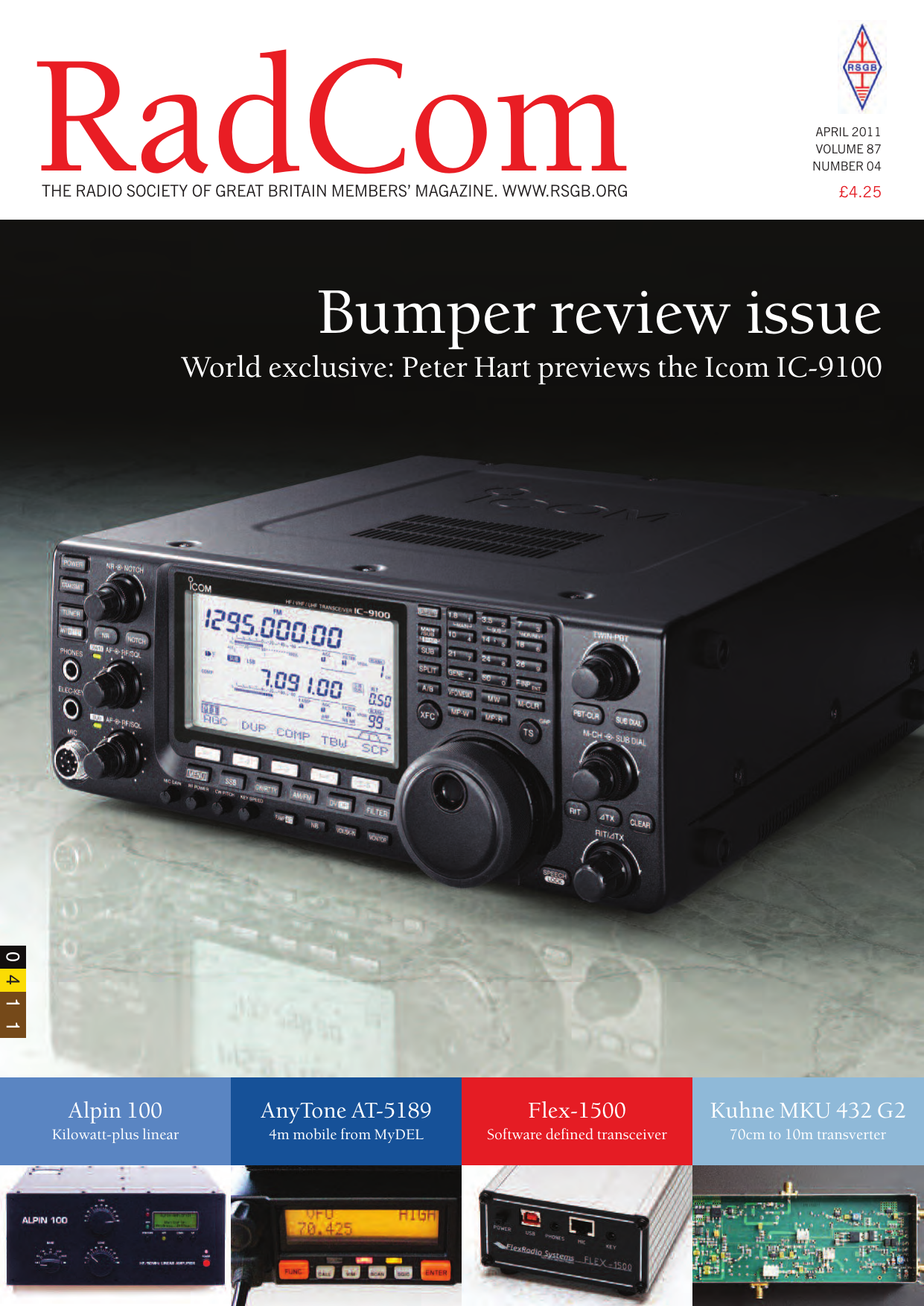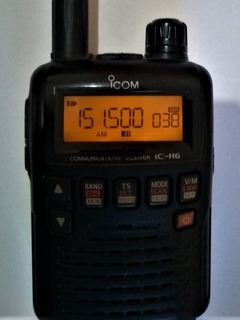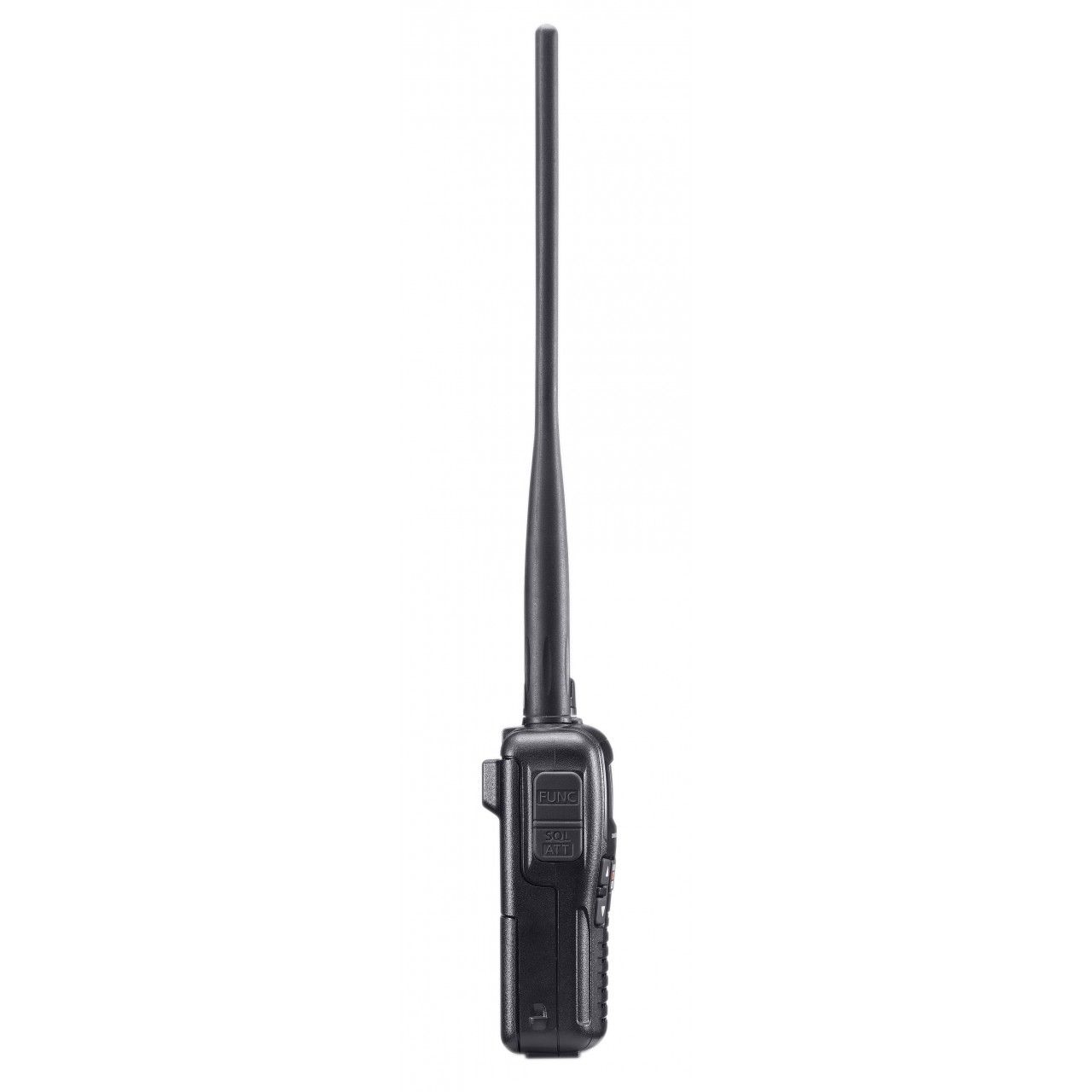
Is the IC-R6 a good choice for a mediumwave DXer? Unfortunately, no. I’m even able to reliably receive one 25-mile-distant daytime broadcaster this truly surprised me, especially since the internal antenna must be minuscule. I’m able to receive all of my local AM broadcasters with decent signal strength. In terms of AM performance, I was happy with the IC-R6. This is a welcome feature because there’s no need to remove the supplied rubber-duck antenna to connect an external antenna for broadcast listening. Surprisingly, the IC-R6 has a tiny internal ferrite bar antenna for mediumwave/AM broadcast band reception.

Though I initially felt I was keying up to “transmit” on an HT, it soon became apparent that this is a very logical key placement. It’s actually a great location for the button because it allows one hand to hold the radio and push the function button, permitting the other hand to push a front panel button. What makes each operation handy is that the Function key––which helps toggle the four multi-function buttons––is located where the PTT (push to talk) button would be on an amateur handheld transceiver.

Once I spent a few minutes reading through the IC-R6 manual’s outline of its basic functions, I found most operations are simple and relatively easy to remember.
#Icom ic r6 alpha tag manual
The 80-page manual is entirely in English (the US version, at least) and even has a cut-out pocket guide in the end. It’s very well written, and takes you through each function step by step. Fortunately, the Icom user manual is superb, and well worth the read. If, like me, you’re the type of person who typically ignores the owner’s manual when you first receive a new radio, the IC-R6 may prove frustrating. That being said, however, I must say that Icom has done a surprisingly good job of making the IC-R6 usable in the field. Like its compact competitors, it also lacks a direct entry keypad-––after all, there’s simply no room for a keypad, and if there was one, it would obviously be too small to use. The IC-R6, like most other tiny handhelds, has a spartan array of buttons, all of which have multiple functions. Here I need to throw out a disclaimer: I’m not a fan of handheld radio (Handy Talky) ergonomics. Still, I was curious enough about the IC-R6 to want to put it through its paces on shortwave and mediumwave, so I contacted Icom, who generously sent me an IC-R6 on extended loan for the purpose of this review Usability/Ergonomics

This makes sense, as there are invariably performance compromises when you pack wideband reception into such a tiny package: manufacturers usually put a performance emphasis on the VHF/UHF bands rather than on HF or mediumwave. Reviewers of this handheld receivers typically gloss over shortwave and mediumwave reception, and for good reason––it’s generally known that you just can’t have the best of both worlds in the sub-$300 price range. Over the years I’ve read numerous reviews of the IC-R6 and other wideband receivers. What makes the IC-R6 appealing is that––at just $175 US––it is one of the least expensive wideband handhelds/scanners on the market that not only covers the shortwave bands, but also the AM broadcast, Longwave, FM broadcast, & NOAA weather frequencies. This is a market I’ve never truly explored because, to be honest, I’m partial to the HF part of the spectrum, and wideband receivers have always seemed more akin scanners than to shortwave receivers.īut lately, readers have specifically asked about the Icom IC-R6, a compact handheld receiver that covers from 100 kHz to 1309.995 MHz. Over the past year, I’ve received a number of inquiries from readers who are considering purchasing a handheld wideband receiver. The following review originally appeared in the SEptember 2016 issue of The Spectrum Monitor magazine.


 0 kommentar(er)
0 kommentar(er)
